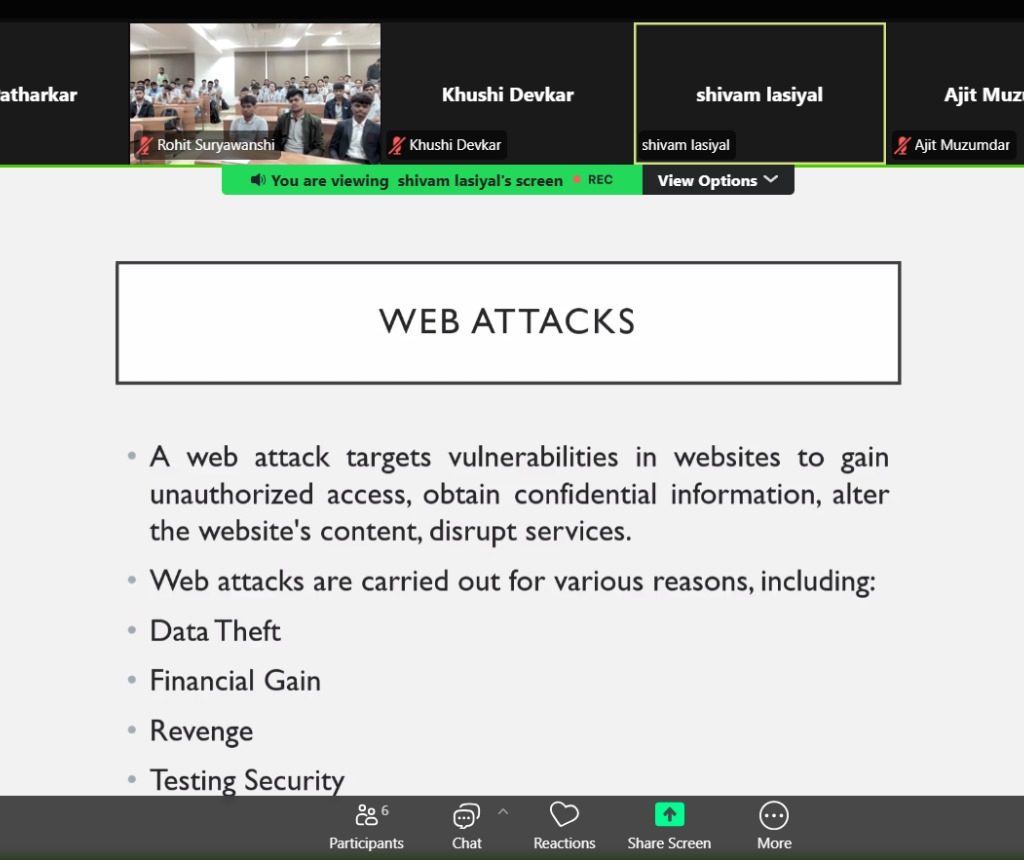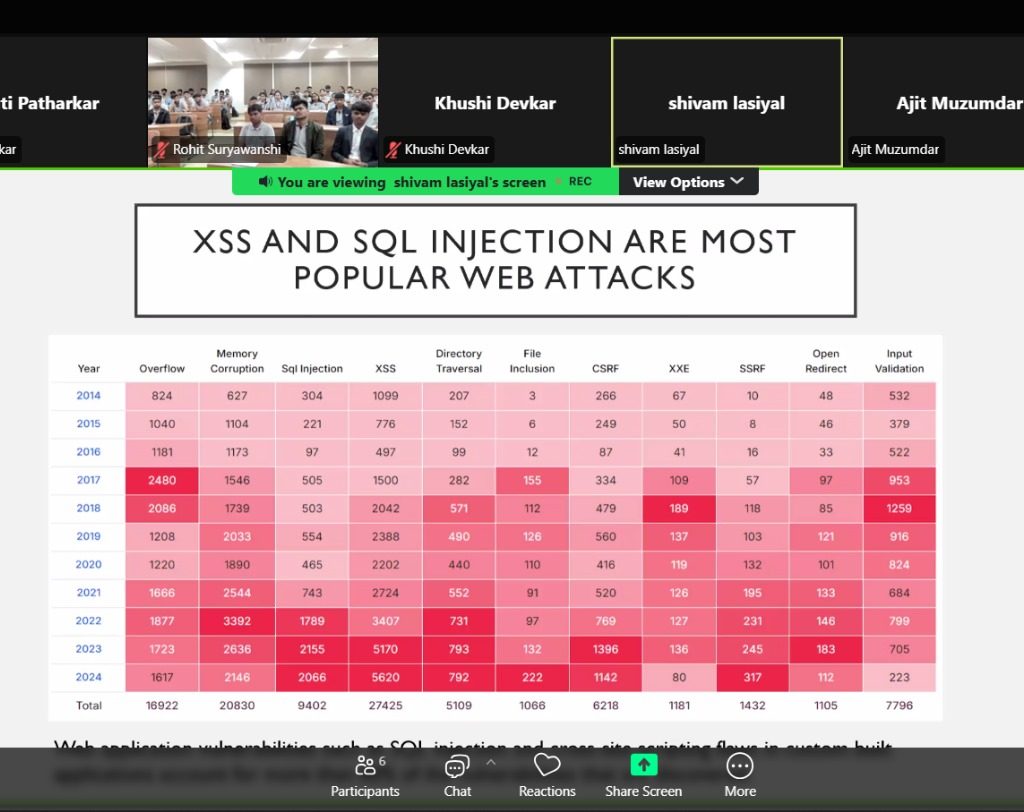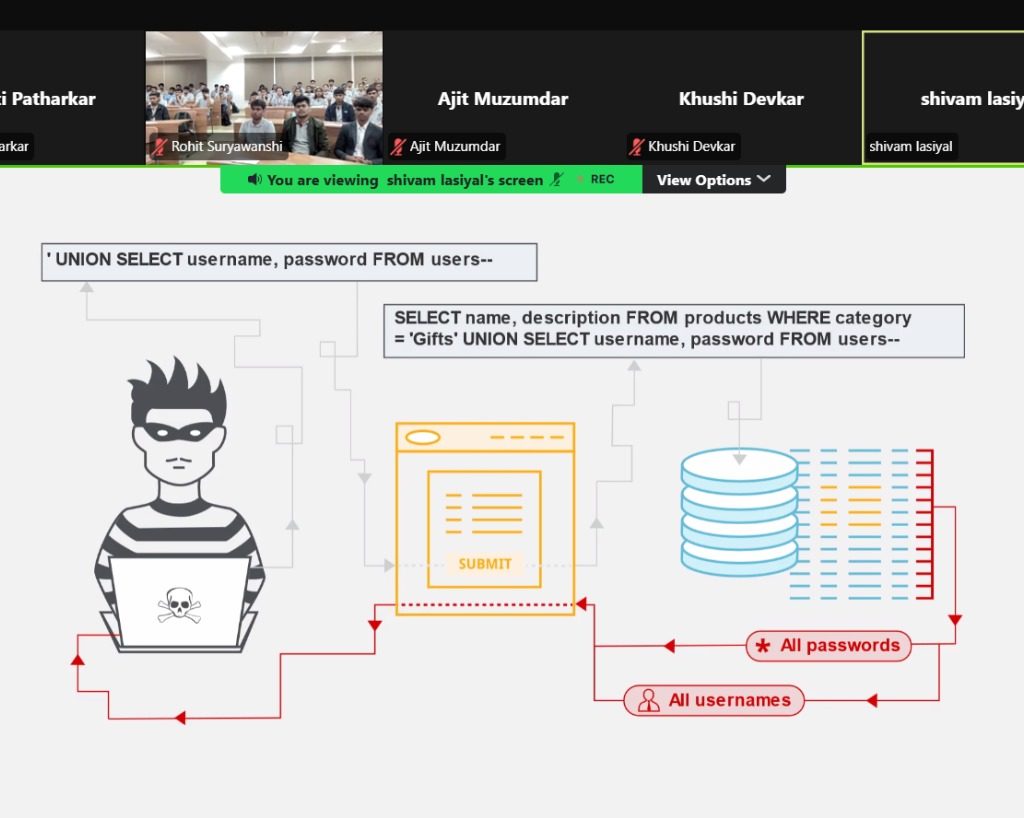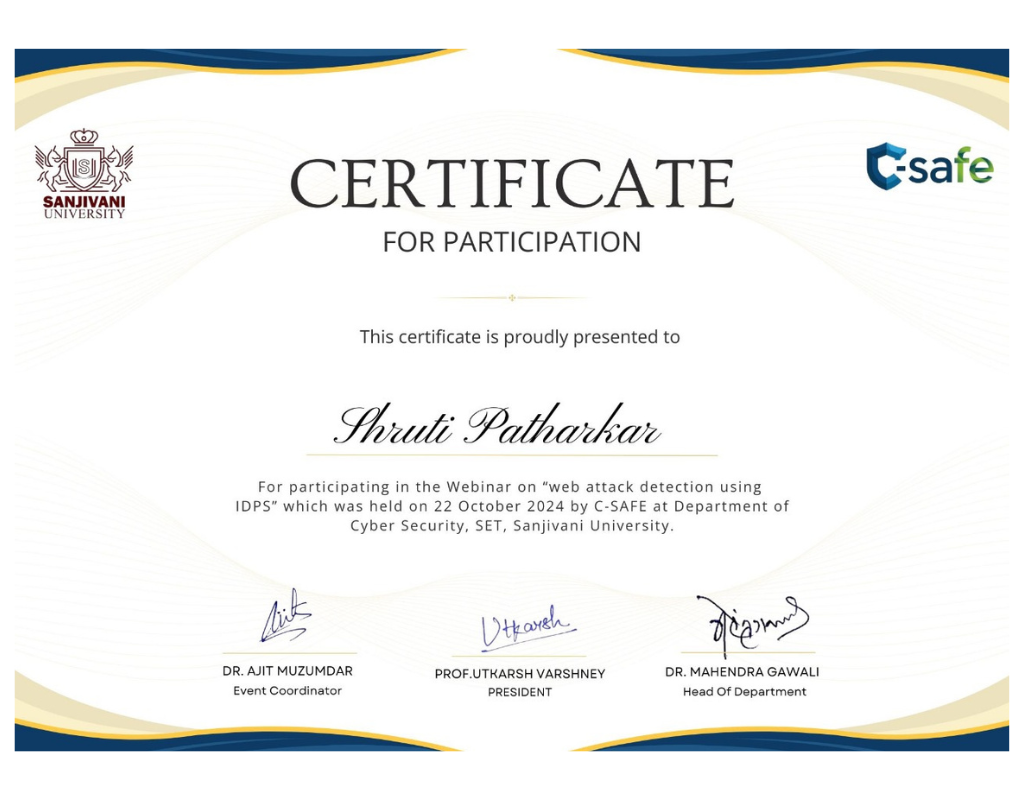Web attack detection using IDPS
A recent webinar organized by C-SAFE on ‘Web Attack Detection Using IDPS: A Robust Approach by Shivam L. Sir to Strengthen Cybersecurity Defenses.'”
Page 1: Cybersecurity Concepts
Tools and Techniques:
Wireshark and VS Code: Used for scripting and network analysis.
SQL: Primary language utilized for database interactions.
Common-client: Used within an Ubuntu environment for certain tasks.
Bypass Techniques:
Encoding:
HTML Encoding in developer mode.
Base64 Encoding.
SQL Injection:
Using SQL queries and comments to exploit vulnerabilities.
Converting Base64 to JavaScript for analysis and attacks.
Q&A: Most Harmful Attacks:
SQL Injection: A severe attack affecting database integrity and security.
Cross-Site Scripting (XSS): Can manipulate entire web applications through
Page 2: Intrusion Detection and Response
Network Analysis Workflow:
Involves several stages:
Packet Decode: Interpreting raw data packets.
Pre-Processor: Initial filtering and preprocessing of data.
Detection Engine: Identifying malicious activity using rules.
Logging: Recording detected threats for further analysis.
Rules are crucial for identifying potential threats in network traffic.
IDS Rule Example:
Example of an Intrusion Detection System (IDS) rule:
plaintext
Copy code
action: alert
protocol: tcp
source IP: any
source port: 23
destination IP: 192.168.12.8
destination port: any
msg: “TCP Packet is detected”
sid: 2000020
Tools:
CyberChef: Used for data encoding, decoding, and manipulation.
Wireshark: For following network streams and deep packet inspection.
regex101.com: A web-based tool for regular expression pattern matching.
Payload exploration using document.cookie to test vulnerabilities.







Wow, marvelous blog layout! How long have you been blogging for?
you made blogging look easy. The overall look of your Visit our website
is wonderful, let alone the content!